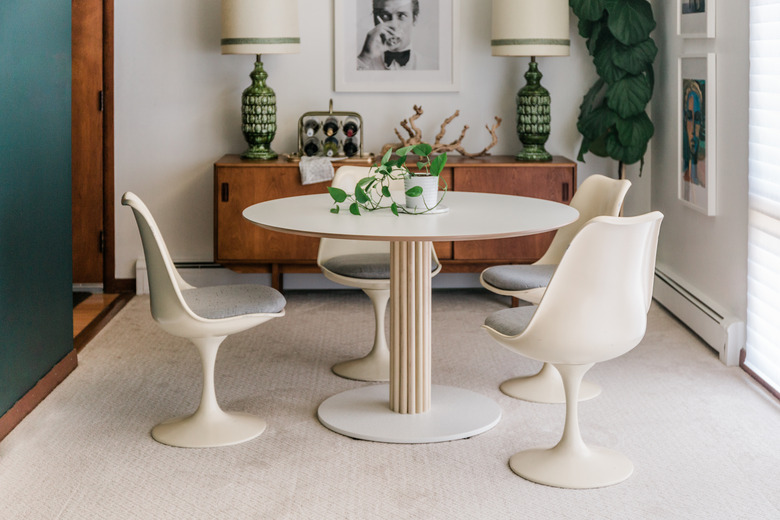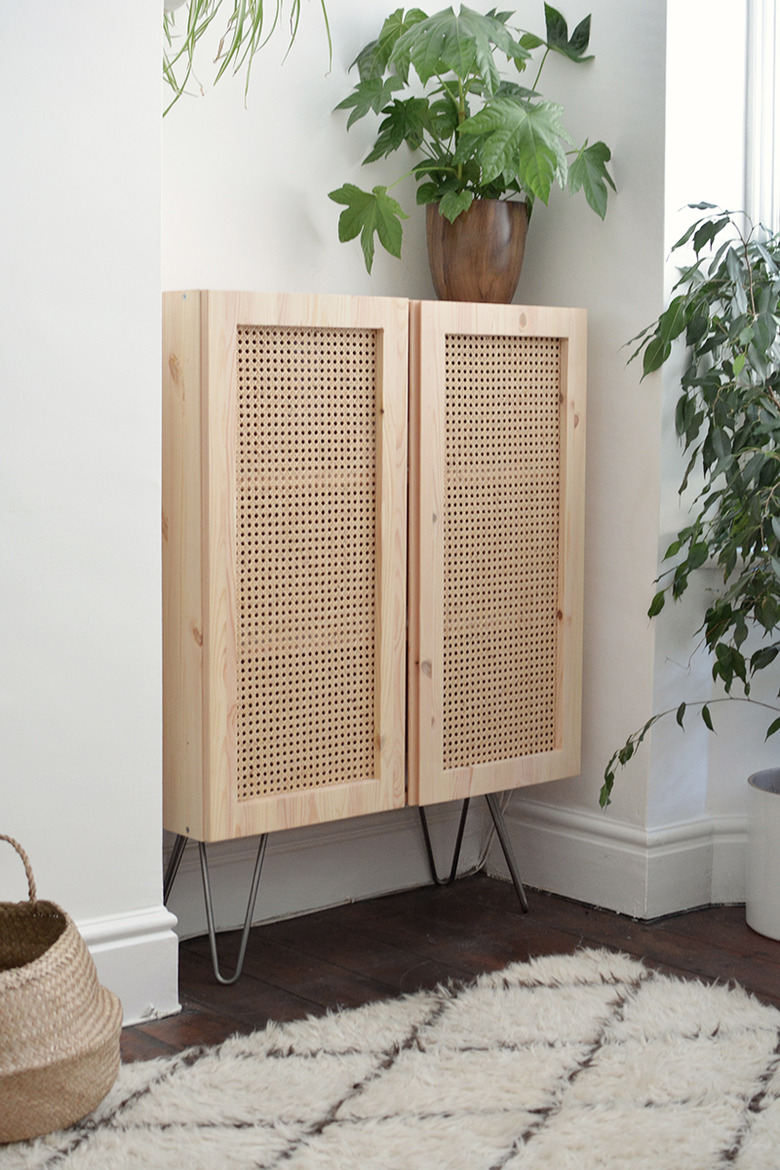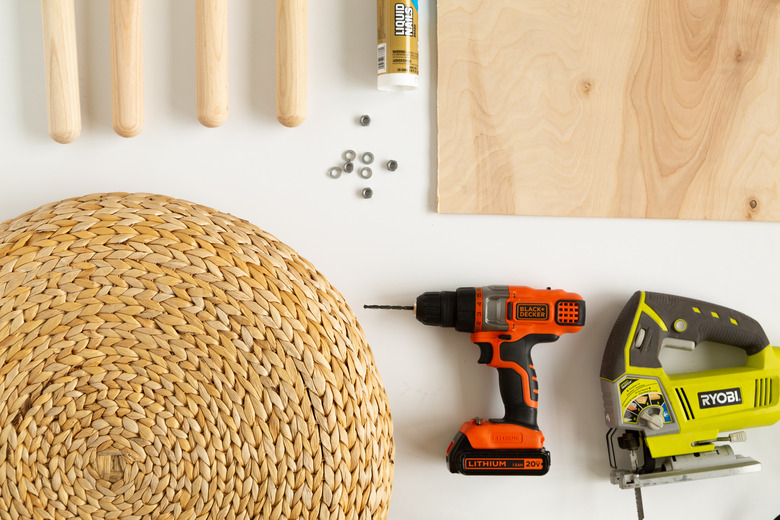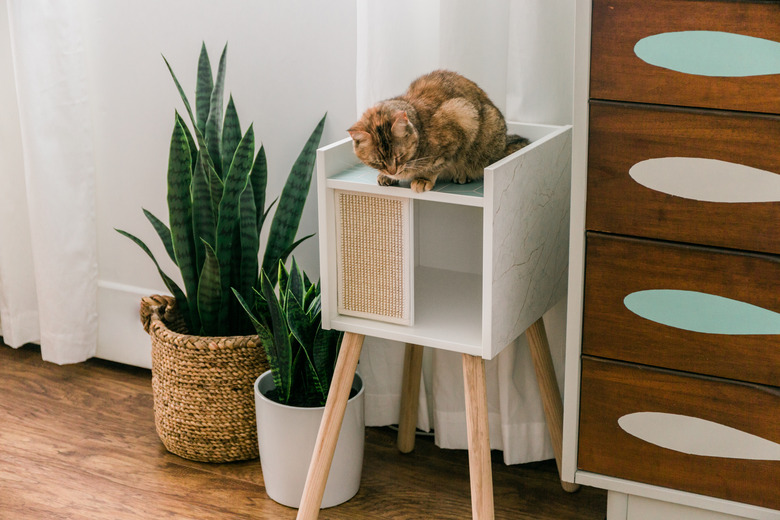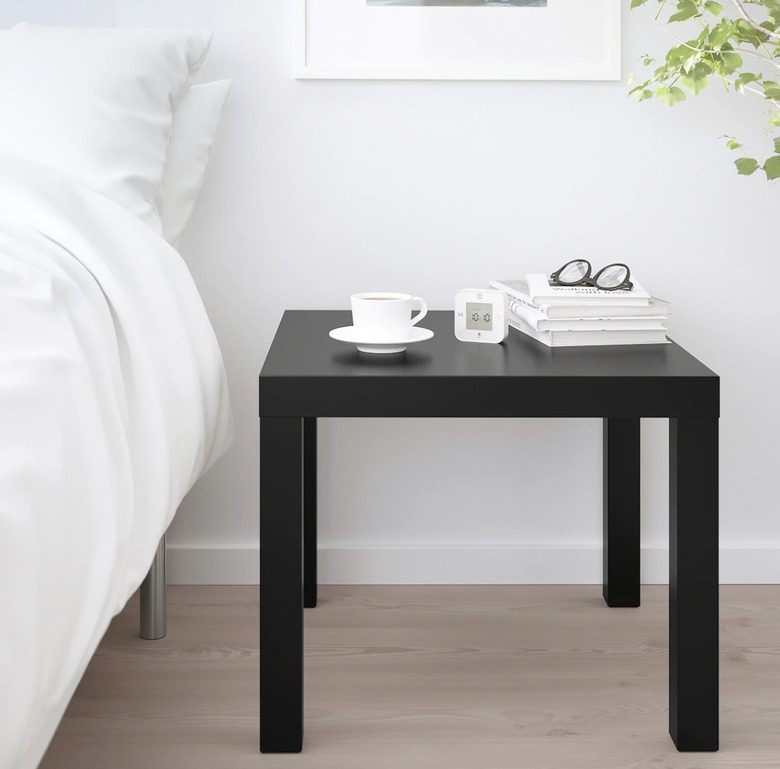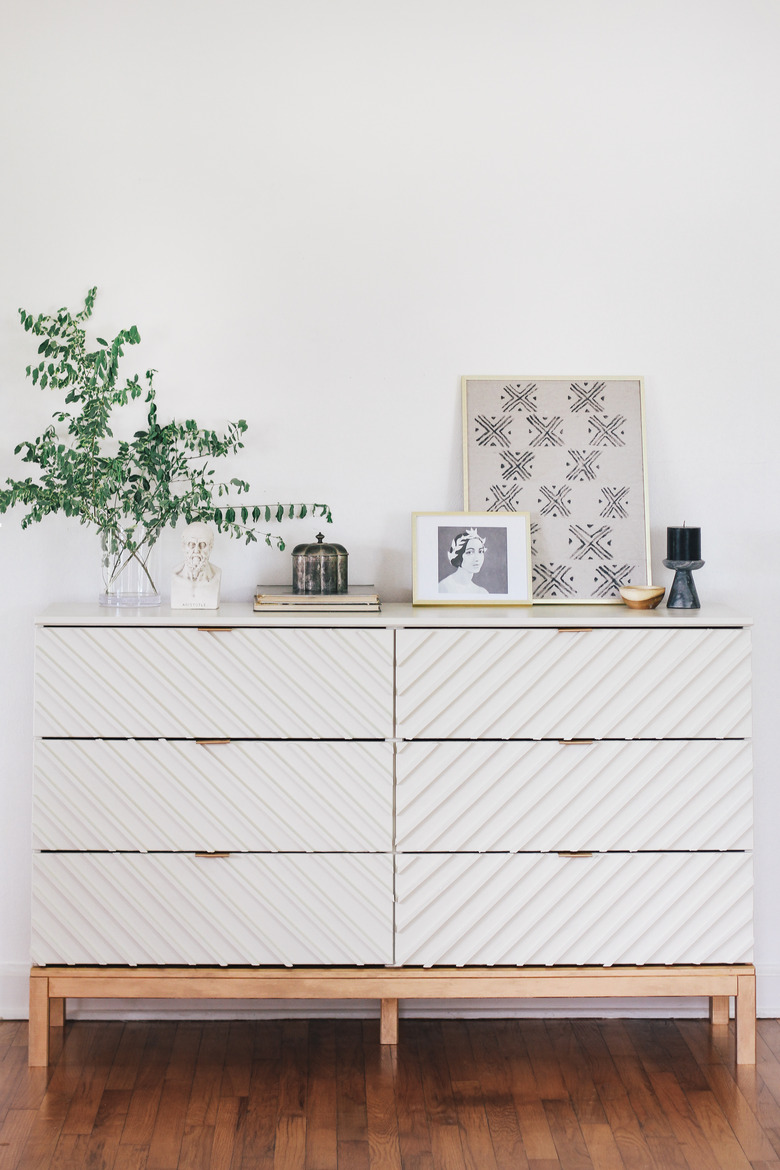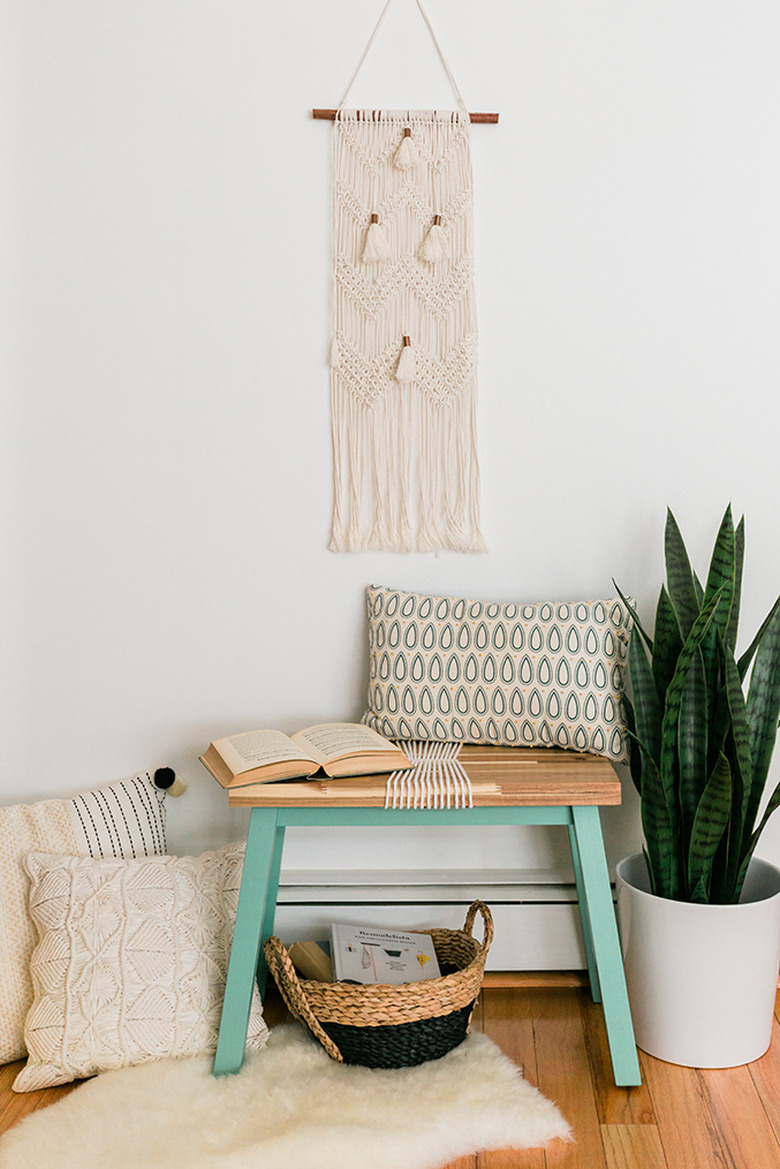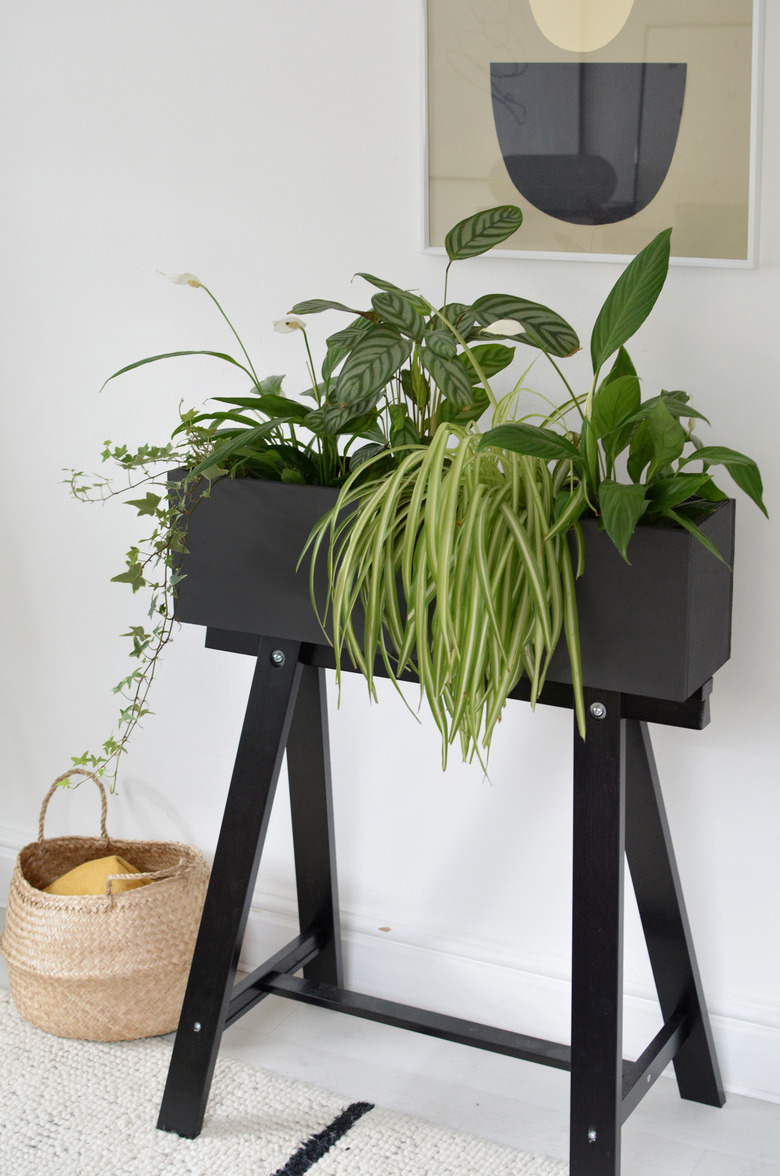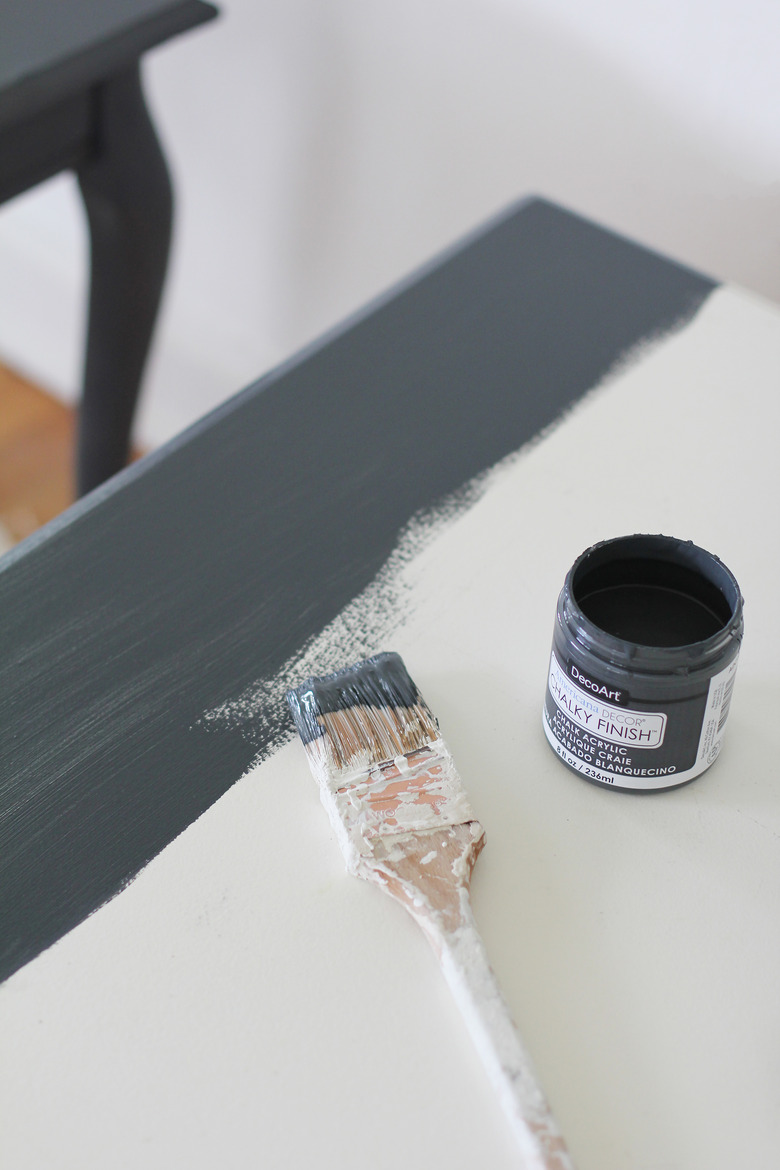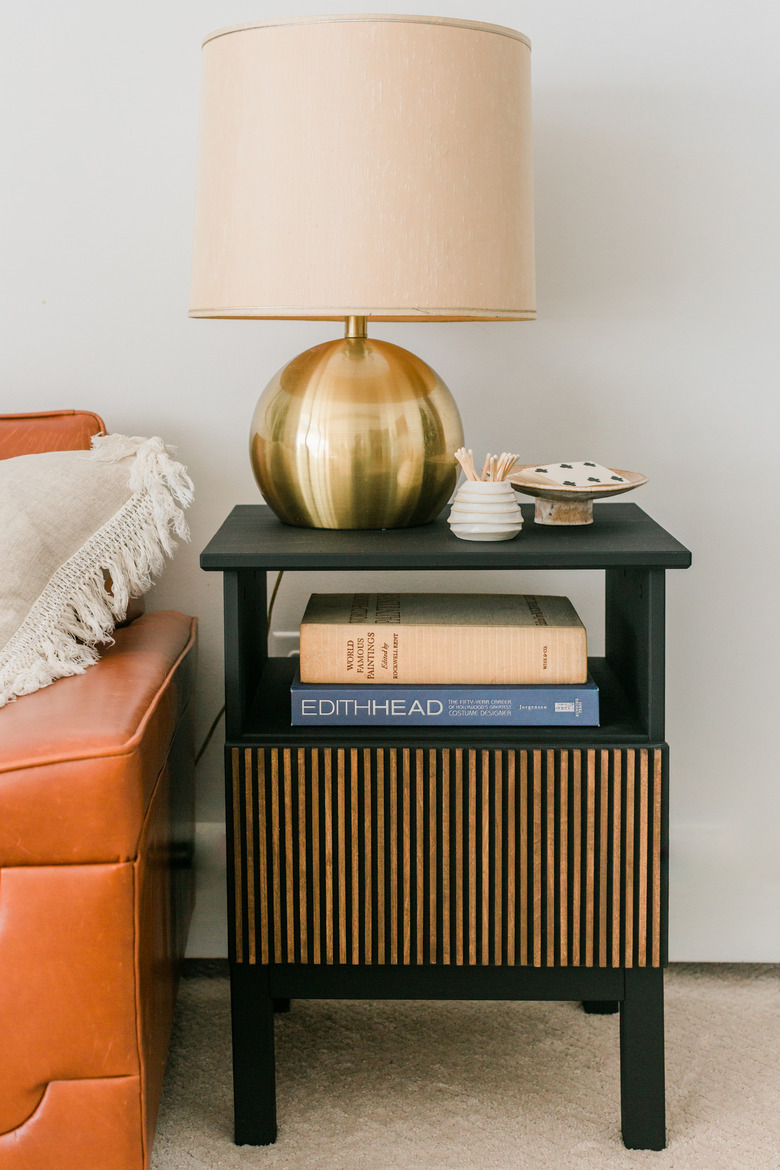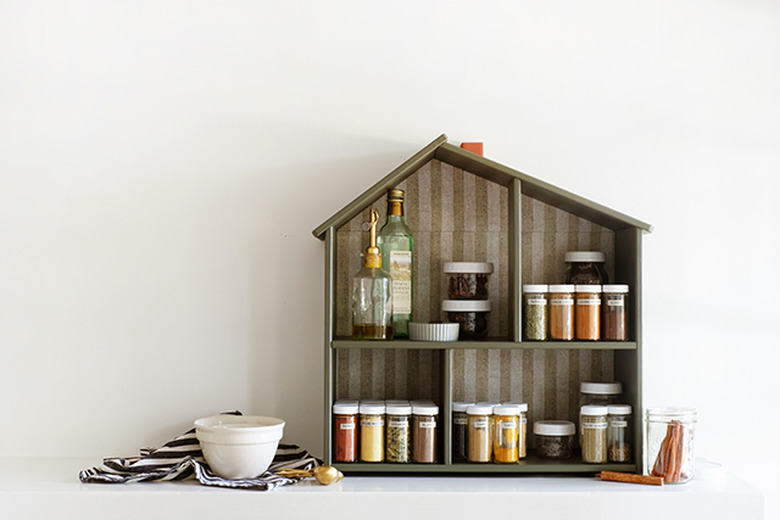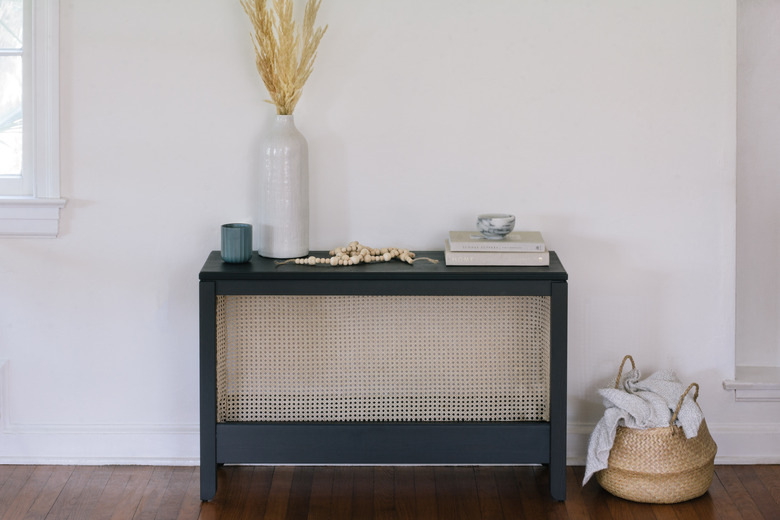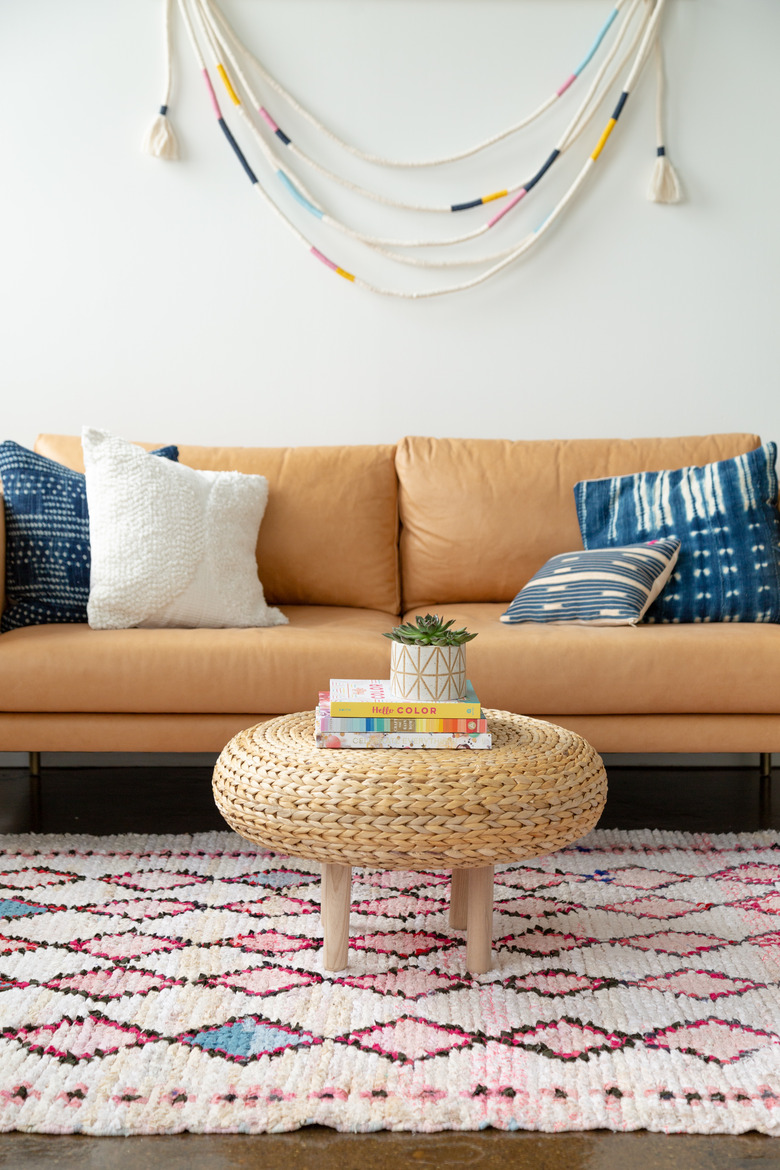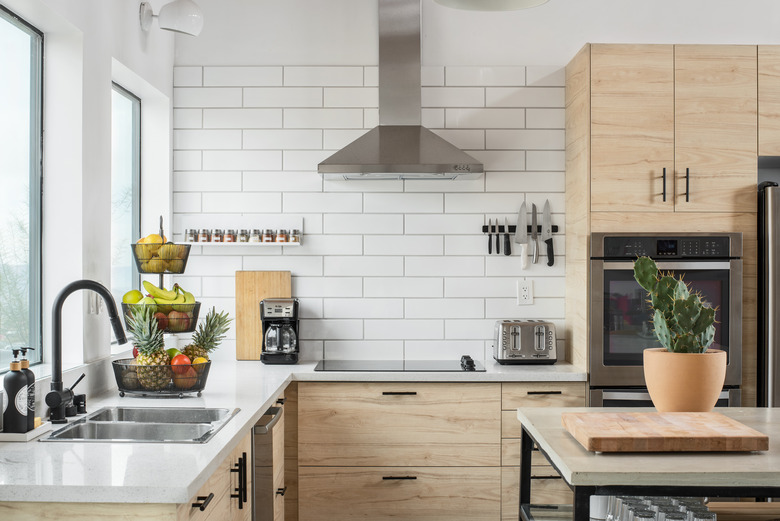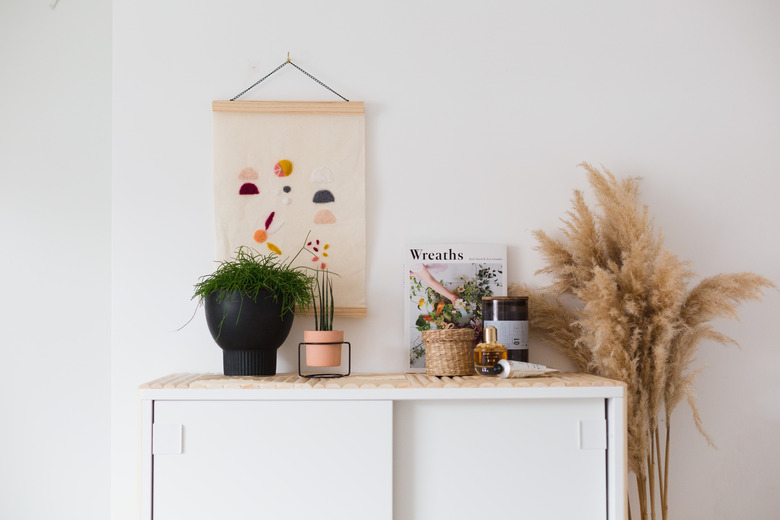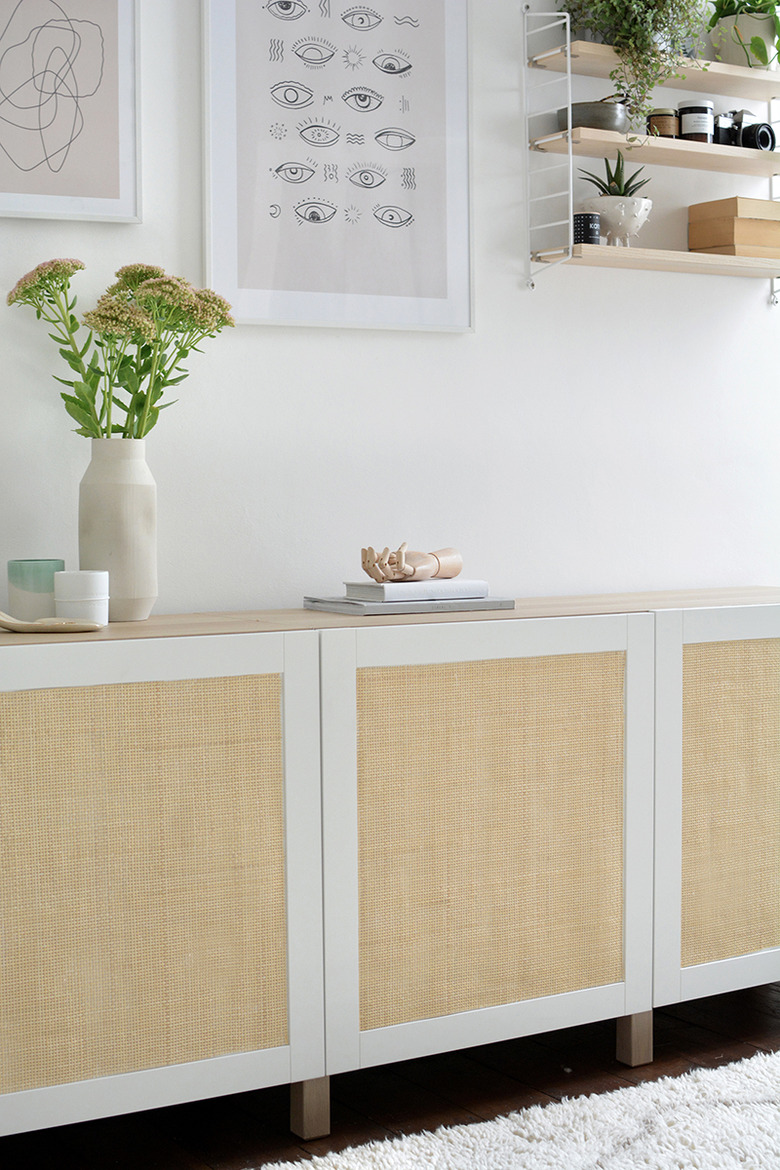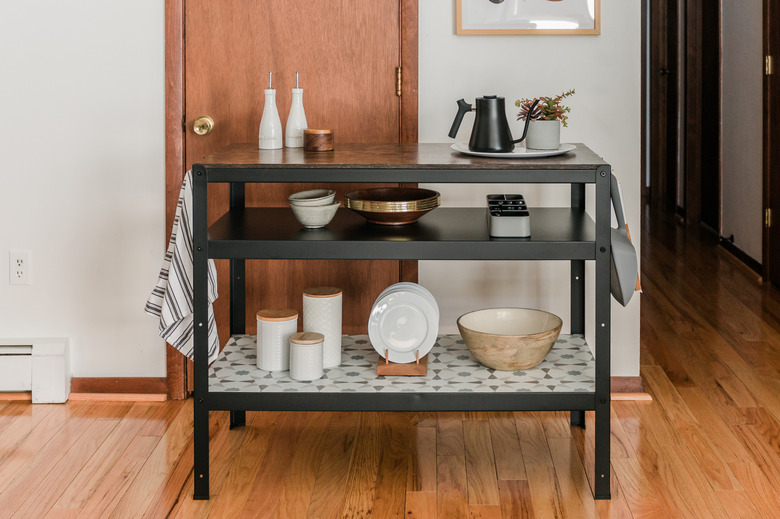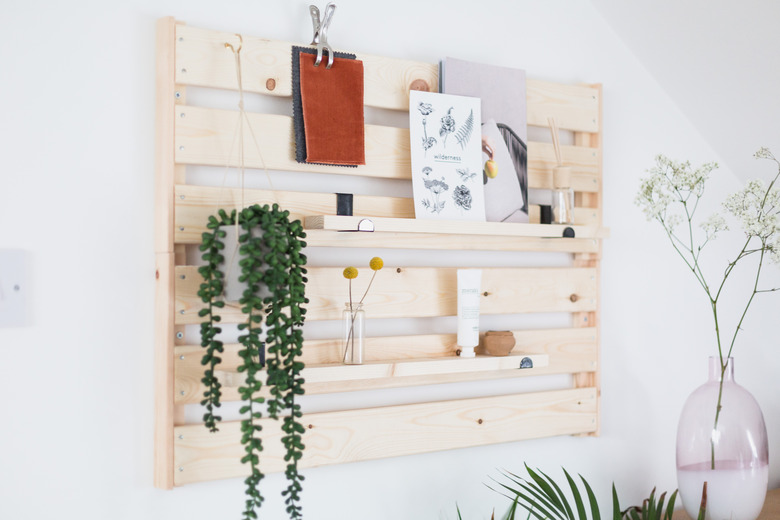19 Easy Ways To Make Your IKEA Hacks Look Super Professional
Whether you've tried and failed, or have beautifully succeeded at an IKEA hack, there is always more to learn when it comes to making your DIY projects look Insta-ready. How do you make your favorite hack look professional and not like a Pinterest fail?
We reached out to home design bloggers, interior designers, and DIY experts for their advice when it comes to prepping, painting, sealing, and styling your favorite IKEA pieces, from insider tips to what to avoid.
1. Consider your design scheme before you decide on a hack.
1. Consider your design scheme before you decide on a hack.
Before you fall head-over-heels with an IKEA hack, make sure you take your current home decor into consideration. Modsy's VP of Style, Alessandra Wood, tells Hunker, "Think about style, color, scale, and materials. You might love a hack, but if it feels out of place in your home, it can throw off your space." Make sure the hack works with what you've already got (or what you're planning to have in the future). There's nothing worse than completing a DIY job, looking at the finished product, and saying to yourself, "This doesn't work."
2. Leave anything you don't feel comfortable with to the experts (like power tools).
2. Leave anything you don't feel comfortable with to the experts (like power tools).
Trisha Sprouse — Hunker contributor and owner of the Vignette blog — explains that while a seemingly simple upholstery piece like a bench or chair seat can be a fun DIY project, it can look novice if you don't have experience with sewing or upholstery. It's important to be realistic about what you can accomplish and to always keep safety in mind. If you find power tools to be intimidating and have no idea how to use them, definitely find someone who has more experience. Interior designer Julie Khuu says that if you're working on a project that involves cutting glass or electrical work, you should call in an expert. And when you're painting or sanding, Rachel Mae Smith of The Crafted Life says that you shouldn't forget to wear a respirator and protective eyewear.
3. Make sure that form meets function.
3. Make sure that form meets function.
Julia Marcum, from the Chris Loves Julia home design blog, says that with every IKEA hack you do, you should consider its function as much as its form. For their "fauxdenza" IKEA hack — using IKEA's Akurum wall cabinets (since replaced by the Sektion system) — Marcus says "it was all about a storage option that was also attractive." Consider giving your IKEA hack a purpose that goes beyond simply looking good.
4. Avoid IKEA’s college dorm pieces.
4. Avoid IKEA's college dorm pieces.
Wood says that DIYers should avoid IKEA college dorm pieces (like the Lack table and Poäng chair). "These pieces will forever be associated with IKEA," she explains, pointing out that certain items will be harder to transform into something that looks completely unique to your home and DIY style. So if you don't want your furniture to remind guests of their college years, you might want to stay away from dorm room staples.
5. Don’t take any shortcuts — especially when prepping and sealing.
5. Don't take any shortcuts — especially when prepping and sealing.
Sprouse says that making an IKEA hack look professional is all about taking your time — especially when it comes to the painting process. "A good mantra to embrace: Your end results are only as good as your prep," Sprouse says. "Cleaning, sanding, and priming are always worth it prior to painting anything to ensure a smooth paint job that doesn't chip or peel down the road." For sealing, Sprouse highly recommends a top coat (polycrylic, wax, lacquer, etc.) to give the item a more finished look (like this gorgeous Tarva dresser she upgraded using dowels.)
6. Sand AND prime.
6. Sand AND prime.
Another tip when it comes to painting: "Sand, sand, sand!" Khuu says. "The first step in prepping for a beautifully finished coat starts with the [sanding]." The next best step, Khuu explains, is to use a water-based primer that's tinted in the color you're using to paint: "White primer for a light or white finished coat. Tinted gray primer for anything black" or a different color. Smith adds you can also use "a deglosser or bonding primer first," but it's usually best to stick with standard sanding. "Just be sure to also use a damp lint-free cloth or tack cloth to wipe off your piece after you sand," she says, so that you don't have to worry about painting over dust or dirt.
7. Don’t knock a high-quality painting tool.
7. Don't knock a high-quality painting tool.
When it comes to making sure you have a professional-looking finished product, you'll want the best tools to do the job. Sprouse recommends that you pay a few dollars extra for a higher quality paintbrush or roller. "It's so worth it to not be constantly picking brush hairs out of your paint job, or trying to smooth out your brush strokes," she says. You can read more of Sprouse's painting tips here.
8. Chalk paint is your friend.
8. Chalk paint is your friend.
"My best painting trick is to use chalk paint!" Sprouse says. "It's so great to use on IKEA pieces in particular, which are known to have really durable topcoats on them and would otherwise require sanding or deglossing when working with other paint types." This type of paint is great when it comes to adhesion; Wood adds that it also has a "forgiving finish." You can read Sprouse's comprehensive Hunker guide on chalk paint here.
9. Only paint over raw wood.
9. Only paint over raw wood.
Wood emphasizes that to avoid paint chipping off your piece, you'll want to make sure to only paint on raw wood, such as pieces made of crafted pine. When it comes to working with the right type of wood, Smith cites her dresser DIY as an example. "I personally love working with IKEA's unfinished wood pieces," she explains. "They're a great base without having to do a lot of grunt sanding work, plus the paint will stick better."
10. Test your paint first.
10. Test your paint first.
Giving your paint a test run is especially key if you're not sure how the color will look on the object. Maybe you need to sand more, prime more, or buy a different type of paint altogether. Anna Evgeniou of the Minimalista DIY YouTube channel recommends you "test your paint on a not-so-obvious part of the object you want to paint first." This can prevent you from having to scrap the whole project.
11. Camouflage your seams.
11. Camouflage your seams.
If you're embellishing your IKEA item with trim or molding, DIY design blogger Erin Spain recommends you "keep your seams sealed tight and camouflaged well." There is nothing worse than a seam sticking out to ruin the chic look of your piece.
12. Consider adding a textured element.
12. Consider adding a textured element.
Smith says that IKEA hacks should be seen as more than a fresh coat of paint. "Adding a textured element (like caning or additional wood to make a pattern) is a simple way to elevate an item," says Smith. For inspiration, Smith suggests exploring furniture websites to see what's currently trending. Check out Sprouse's caning IKEA hack for Hunker here.
13. Experiment with feet and hardware.
13. Experiment with feet and hardware.
"Pay attention to the details," says Wood. "Feet and hardware are great places to start to make your IKEA pieces feel more high-end." You can source vintage drawer knobs or scour Etsy for furniture feet that will turn your IKEA piece into something that's entirely yours. Marcum seconds this approach. "Upgrade the hardware FIRST," she tells Hunker. "Hardware adds so much personality, and if there's a place to 'splurge' on a project — it's the hardware."
14. Call on the professionals for kitchen cabinets.
14. Call on the professionals for kitchen cabinets.
For your kitchen cabinets, Wood says that you should employ a professional's help. "There are a number of companies who make faces and upgrades for IKEA kitchen cabinets that really up level them," she explains, emphasizing that an expert's touch can make a huge difference. She recommends Semihandmade, a company that specializes in turning your IKEA kitchen into one that looks custom.
15. Pay a visit to your local thrift store.
15. Pay a visit to your local thrift store.
When styling, Khuu and Sprouse both recommend using vintage pieces. "Scour your local thrift stores and flea markets for truly one-of-a-kind accessory items in raw finishes like concrete, clay, marble, and unfinished wood," Khuu suggests, adding that she personally loves filling thrifted clay or glass vessels with outdoor branches she gets from her own courtyard. Sustainable and chic!
16. View surfaces in terms of thirds.
16. View surfaces in terms of thirds.
When asked for her #1 styling tip for IKEA hacks, Smith answers that you should view surfaces in terms of thirds to create balance. She's specifically referring to photography's "rule of thirds," in which you should divide a space (typically a wall used for photos) into thirds, horizontally or vertically, and then arrange the most crucial items within that grid.
17. Go for an odd number of objects.
17. Go for an odd number of objects.
When you're styling your hack, both Spain and Sprouse recommend using an odd number of objects instead of an even number. This is referring to the "rule of three" (not to be mistaken with the "rule of thirds" above) in interior design, which operates on the idea that objects grouped in odd numbers are more visually appealing to the human eye. They also suggest using a variety of sizes.
18. Shop around your own house.
18. Shop around your own house.
In the spirit of DIY, interior stylists Kathryn Hawkes of House of Hawkes and Linda Dekkers of Live Loud Girl — the creative forces behind Fronteriors — recommend taking a look around your own home. You can always paint or reupholster something, meaning that you should only go out and buy items that are absolutely necessary. Similar to an IKEA hack, maybe you have a piece in another part of your home that, with an upgrade, would be perfect in the space you're currently decorating. It's all about seeing what you already own with a fresh perspective.
19. Ask the experts to do it instead.
19. Ask the experts to do it instead.
If IKEA hacks aren't in your wheelhouse, there are companies out there that were designed to help. Home decor expert Alexandra Gater, whose IKEA hack YouTube videos get hundreds of thousands of views, tells Hunker that a few of her favorites are: Bemz (sofa and chair covers), Pretty Pegs (replacement legs and doors), and Behang Fabriek (custom decal stickers for drawer fronts). Fronteriors, which we mentioned, designs doors, sides, tops, handles, and legs that fit certain IKEA pieces.
If you want to change the look of items like your cabinet doors but are afraid to do the paint job yourself, ask the pros. "You can always look up local services near you that will do spray painting on items like kitchen cabinet doors," Paul Anderson, Hunker's Creative Director, says. Websites like Spray Net can also help with these needs. Spray paint leaves a much smoother finish, avoiding any paintbrush strokes from showing up. And it's an alternative to buying entirely new doors (while still getting a unique look for your IKEA hack).
